Papers by Alemseged Beldados
Stories of Globalisation: The Red Sea and the Persian Gulf from Late Prehistory to Early Modernity, 2018
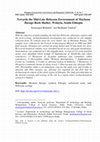
Ethiopian journal of the social sciences and humanities, 2020
With the objective of understanding the mid-late Holocene subsistence pattern and the local ecolo... more With the objective of understanding the mid-late Holocene subsistence pattern and the local ecology, archaeobotanical investigation was conducted on soil samples collected from 29 contexts from the rock shelter site of Mochena Borago. The samples were collected by the French Archaeological Mission in 2000 and 2001 field seasons. Flotation was carried out using bucket and 2.0 mm mesh size sieve. Recovered botanical remains were classified based on size and grain morphology. Seed analysis was conducted at 5-20x magnification. A total of 112 seeds and fruit stones were identified which include 55 Sapindaceae cf. Deinbollia type (dune soap-berry), 33 Myrtaceae cf. Syzigium guineense type (sometimes called waterberry), 9 Plectranthus edulis (Wolayta dinich/potato), 7 Euphorbiaceae Croton sp. (rushfoil), 2 Cordia cf. africana (wanza in Amharic), 1 Ebenaceae cf. Diospyros (commonly known as ebony trees), 1 Olea europea ssp. africana (Olive Oil). Plectranthus edulis is an indigenous crop f...
Introduction The outline of a cultural sequence for the Kassala region and Gash delta, an area wh... more Introduction The outline of a cultural sequence for the Kassala region and Gash delta, an area which, before the fieldwork conducted from 1980 to 1995, was virtually unknown from the archaeological point of view, is an outstanding result of the fieldwork conducted by the IAMSK (Italian Archaeological Expedition to the Sudan, Kassala) directed by Rodolfo Fattovich. Of course, several of the cultures which were at that time identified remain to be better investigated and this may also result in minor changes of their absolute chronology. Nevertheless, it is now possible to outline the following processes taking place in the region (Fattovich 1989, 1990, 1991b, 1994; Fattovich, Sadr e Vitagliano 1988-1989):
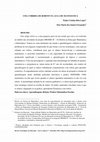
Journal of African Archaeology, 2021
This paper reports the results of an archaeological survey and test excavation conducted in one o... more This paper reports the results of an archaeological survey and test excavation conducted in one of the ancient megalithic stele sites in south Ethiopia, Sakaro Sodo. The Sakaro Sodo stele site is situated in Gedeo zone, which is known to have the largest number and highest concentration of megalithic stele monuments in Africa, with an estimate of more than 10,000 stelae in sixty or more sites. Prior to our work, only one absolute date was available (850 ± 40 BP) (Joussaume 2012) from a stele site in the Gedeo zone, suggesting stele sites began to be constructed in the region approximately a millennium ago. We report here new AMS dates suggesting that stelae were being emplaced about 2000 BP, pushing the creation of these monuments back at least a millennium. Additionally, we report preliminary findings from characterizing the geochemical properties of obsidian artifacts recovered from stele sites, and stone used to make stelae. While compositional analysis of obsidian suggests long-...
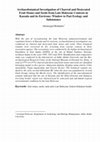
Ethiopian Journal of the Social Sciences and Humanities, 2018
With the aim of reconstructing the Late Holocene palaeoenvironment and vegetation history of Kass... more With the aim of reconstructing the Late Holocene palaeoenvironment and vegetation history of Kassala and its environs, archaeobotanical investigation was conducted on charred and desiccated fruit stones and seeds. These botanical remains were recovered by dry screening from various contexts in three excavation squares. The excavations were conducted by the Italian Archaeological Expedition in East Sudan (IAEES) at the site of Mahal Teglinos, Kassala, northeast Sudan in the years 1991, 2013 and 2014. Identification and comparative study was conducted in the laboratories of Addis Ababa University and the Bioarchaeological Research Center of the National Museum of Oriental Art, Rome. A total of 1771 (n=1771) charred and desiccated fruit stones and seeds are identified belonging mainly to five species: Adansonia digitata, Ziziphus spina-christi, Celtis integrifolia, Vigna unguiculata and Grewia bicolor. The botanical remains are dated to the early second millennium BC when the area was populated by several Gash Groups (along the Mereb river). The identification of the macrobotanical remains indicated that the site of Kassala and the Ethio-Eritrean and Sudanese low-lying border region was characterized by semi-arid and sub-humid tropical environmental conditions by the Late Holocene.
Antiquity, 2021
The investigation of Islamic archaeology in Ethiopia has until recently been neglected. Excavatio... more The investigation of Islamic archaeology in Ethiopia has until recently been neglected. Excavations at Harlaa, a large urban centre in eastern Ethiopia, are now beginning to redress this lack of research attention. By establishing occupation and material sequences, and by assessing the chronology and material markers of Islamisation, recent work provides important new insight on the presence and role of Muslims and Islamic practice at Harlaa, and in the Horn of Africa more generally. The results challenge previous assumptions of cultural homogeneity, instead indicating the development of cosmopolitanism. They also suggest a possible historical identity for Harlaa: as Hubät/Hobat, the capital of the Hārlā sultanate.
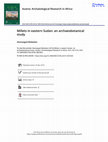
Azania: Archaeological Research in Africa, 2019
Charred botanical remains and plant impressions in pottery sherds and baked clay pieces recovered... more Charred botanical remains and plant impressions in pottery sherds and baked clay pieces recovered during survey and archaeological excavation mainly at Mahal Teglinos (Kassala, K-1), Sudan, were examined for botanical remains. Archaeobotanical analyses were undertaken on these and similar artefacts recovered during surveys of the same site and its surrounds (Kashim el-Girba and Shurab el-Gash). The studied samples yield evidence for plant use and cultivation of millets and the presence of different edible and non-edible plant species. This paper focuses primarily on the varieties of small seeded millets recovered from archaeological contexts. Previous archaeobotanical reports from the region lack detailed reports on the early history and agricultural value of small seeded millets, except for a focus on sorghum and pearl millet. The recovered millet varieties include Paspalum, Setaria, Brachiara, Echinochloa and Pennisetum. The identified taxa were both morphologically wild and cultivated. They date to between the mid-fourth millennium BC (Butana Group) and the mid-first millennium AD (Hagis Group). The results of the study indicate that alongside sorghum were small seeded millets likely used for human consumption and/or animal fodder in settlement contexts dating back to the mid-fourth millennium BC. Unlike previous reports on seed impressions and glumes, this study also relies on analysis of desiccated and charred small seeded millets.
Science, 2019
Middle Stone Age humans in high-altitude Africa Recent archaeological research has produced evide... more Middle Stone Age humans in high-altitude Africa Recent archaeological research has produced evidence of the earliest human occupation of high-altitude habitats in the Andes and the Tibetan Plateau. Ossendorf et al. now present the oldest evidence of human settlement and adaptation to areas above 4000-meter elevation in Africa (see the Perspective by Aldenderfer). Their excavations at a rock shelter in the Bale Mountains of Ethiopia reveal obsidian artifacts and faunal remains, including abundant burnt bones, mostly of giant mole-rats. The findings reveal the environmental conditions and show how Late Pleistocene humans adapted to the harsh environments of these glaciated high-altitude African landscapes. Science , this issue p. 583 ; see also p. 541

Plants and People in the African Past, 2018
Carbonized plant remains and plant impressions in burnt clay pieces, recovered during archaeologi... more Carbonized plant remains and plant impressions in burnt clay pieces, recovered during archaeological excavation and survey of two sites in East Sudan, were subjected to archaeobotanical investigation. Analysed samples have provided evidence for plant use and cultivation of sorghum alongside the use of a range of other taxa. The results from this study illustrate that as late as the early second millennium BC, the inhabitants of Kassala were still exploiting a mixture of morphologically wild and domesticated Sorghum bicolor. The evidence suggests that while the domestication process of sorghum was underway, full domestication may not have been reached at this time. We can hence classify this as part of the pre-domestication cultivation stage for Sorghum bicolor, which can be inferred to have begun at least two thousand years earlier. Wild taxa that may also have been exploited for food include Brachiaria sp., Rottboellia cochinchinensis (itchgrass), and apparently mixed wild and domesticated Pennisetum glaucum (pearl millet). This study also provides the first archaeobotanical evidence for Adansonia digitata (baobab) in northeastern Africa. Taken together these data suggest that Kassala was part of an early core area for sorghum domestication and played an important role in the diffusion of Africa crops including pearl millet to Asia.
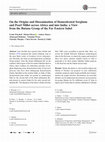
African Archaeological Review, 2018
Four decades have passed since Harlan and Stemler (1976) proposed the eastern Sahelian zone as th... more Four decades have passed since Harlan and Stemler (1976) proposed the eastern Sahelian zone as the most likely center of Sorghum bicolor domestication. Recently, new data on seed impressions on Butana Group pottery, from the fourth millennium BC in the southern Atbai region of the far eastern Sahelian Belt in Africa, show evidence for cultivation activities of sorghum displaying some domestication traits. Pennisetum glaucum may have been undergoing domestication shortly thereafter in the western Sahel, as finds of fully domesticated pearl millet are present in southeastern Mali by the second half of the third millennium BC, and present in eastern Sudan by the early second millennium BC. The dispersal of the latter to India took less than 1000 years according to present data. Here, we review the middle Holocene Sudanese archaeological data for the first time, to situate the origins and spread of these two native summer rainfall cereals in what is proposed to be their eastern Sahelian Sudan gateway to the Red Sea and the Indian Ocean trade. Résumé Quatre décennies se sont écoulées depuis que Harlan et Stemler ont proposé la zone sahélienne orientale comme le centre le plus probable de la domestication du sorgho bicolore. Récemment, de nouvelles données sur les impressions de semences sur les poteries du groupe Butana du IVe millénaire avant JC dans la région sud d'Atbai dans la ceinture sahélienne d'Afrique Afr Archaeol Rev
Azania: Archaeological Research in Africa, 2016
TERRAINS / FIELDWORKS Recent Archaeological Findings from South Ethiopia Par / by Yonas Beyene, M... more TERRAINS / FIELDWORKS Recent Archaeological Findings from South Ethiopia Par / by Yonas Beyene, Metassebia Bekele & Alemseged Beldados Yonas Beyene (chercheur associé au CFEE), Metassebia Bekele et Alemseged Beldados, membres de l'Association for Research and Conservation of Culture de Hawassa (ARCC-Hawassa), ont mené pendant trois ans des recherches archéologiques, ethnobotaniques et historiques sur plusieurs sites de la région SNNPRS (Éthiopie). Ils ont présenté le 28 octobre 2014 un bilan ..
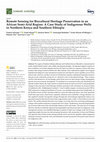
Remote Sensing, 2022
The region of Southern Ethiopia (Borana) and Northern Kenya (Marsabit) is characterised by errati... more The region of Southern Ethiopia (Borana) and Northern Kenya (Marsabit) is characterised by erratic rainfall, limited surface water, aridity, and frequent droughts. An important adaptive response to these conditions, of uncertain antiquity, has been the hand-excavation of a sequence of deep wells at key locations often along seasonal riverbeds and valley bottoms where subterranean aquifers can be tapped. Sophisticated indigenous water management systems have developed to ensure equitable access to these critical water resources, and these are part of well-defined customary institutional leadership structures that govern the community giving rise to a distinctive form of biocultural heritage. These systems, and the wells themselves, are increasingly under threat, however, from climate change, demographic growth, and socio-economic development. To contribute to an assessment of the scale, distribution and intensity of these threats, this study aimed to evaluate the land-use land-cover ...

Ethnoarchaeology
ABSTRACT Ethnoarchaeological research was conducted on traditional agriculture and use of noog (G... more ABSTRACT Ethnoarchaeological research was conducted on traditional agriculture and use of noog (Guizotia abyssinica (L.) Cass.) as well as its wild progenitor, mech (Guizotia scabra (Vis.) Chiov) in present day Ethiopia. The study revealed technological and social aspects of this oil crop. Various traditional processing methods (field and household), division of labor, and economical and cultural values are outlined and described. The study shows the probability of charred remains occurring as a result of field processing noog and household processing of noog and mech. It is, however, difficult to differentiate, based on residue composition, the various field processing activities because of similarity of components and absence of weed seeds associated with the noog crop. The tools used in the processing do not leave evidence in the archaeological record indicative of the presence of noog and mech.
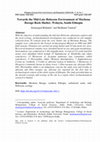
Ethiopian Journal of Social Sciences & Humanities, 2020
With the objective of understanding the mid-late Holocene subsistence pattern and the local ecolo... more With the objective of understanding the mid-late Holocene subsistence pattern and the local ecology, archaeobotanical investigation was conducted on soil samples collected from 29 contexts from the rock shelter site of Mochena Borago. The samples were collected by the French Archaeological Mission in 2000 and 2001 field seasons. Flotation was carried out using bucket and 2.0 mm mesh size sieve. Recovered botanical remains were classified based on size and grain morphology. Seed analysis was conducted at 5-20x magnification. A total of 112 seeds and fruit stones were identified which include 55 Sapindaceae cf. Deinbollia type (dune soap-berry), 33 Myrtaceae cf. Syzigium guineense type (sometimes called waterberry), 9 Plectranthus edulis (Wolayta dinich/potato), 7 Euphorbiaceae Croton sp. (rushfoil), 2 Cordia cf. africana (wanza in Amharic), 1 Ebenaceae cf. Diospyros (commonly known as ebony trees), 1 Olea europea ssp. africana (Olive Oil). Plectranthus edulis is an indigenous crop for the study area and Cordia cf. africana and Olea europea ssp. africana are reported for the first time in archaeological context of the whole region of Ethiopia. The study provided data on the ancient economy and ecology of the site in a region where archaeobotanical research is limited.
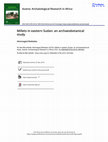
Azania: Archaeological Research in Africa, 2019
Charred botanical remains and plant impressions in pottery sherds and baked clay pieces recovered... more Charred botanical remains and plant impressions in pottery sherds and baked clay pieces recovered during survey and archaeological excavation mainly at Mahal Teglinos (Kassala, K-1), Sudan, were examined for botanical remains. Archaeobotanical analyses were undertaken on these and similar artefacts recovered during surveys of the same site and its surrounds (Kashim el-Girba and Shurab el-Gash). The studied samples yield evidence for plant use and cultivation of millets and the presence of different edible and non-edible plant species. This paper focuses primarily on the varieties of small seeded millets recovered from archaeological contexts. Previous archaeobotanical reports from the region lack detailed reports on the early history and agricultural value of small seeded millets, except for a focus on sorghum and pearl millet. The recovered millet varieties include Paspalum, Setaria, Brachiara, Echinochloa and Pennisetum. The identified taxa were both morphologically wild and cultivated. They date to between the mid-fourth millennium BC (Butana Group) and the mid-first millennium AD (Hagis Group). The results of the study indicate that alongside sorghum were small seeded millets likely used for human consumption and/or animal fodder in settlement contexts dating back to the mid-fourth millennium BC. Unlike previous reports on seed impressions and glumes, this study also relies on analysis of desiccated and charred small seeded millets.
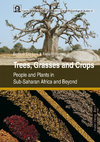
Current archaeobotanical discourse considers pre-domestication cultivation (PDC) as a stage in th... more Current archaeobotanical discourse considers pre-domestication cultivation (PDC) as a stage in the long process of edible plant cultivation until the manifestation of the fully domesticated crop. Today, in the study of early agriculture, it is generally assumed that the stage of PDC is a precondition for the domestication of plants. While understanding PDC is important in the study of the domestication of edible plants, PDC doesn’t fully and exclusively explain the evolution of plants from wild to domesticate in areas where the wild progenitors are prevalent. Isolation of the domesticated crop from its wild progenitor has played an important role in the morphological change of plants. Ethnobotanical and ethnoarchaeological studies on wild and domesticated sorghum (Sorghum bicolor) and noog (Guizotia abyssinica) in northeastern Sudan and northern Ethiopia have indicated that for morphologically domesticated varieties to appear through the process of selection, it is essential for the selected gene pool to be isolated, otherwise backcrossing would occur between the domesticated and the wild plant.
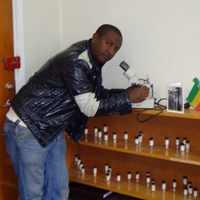

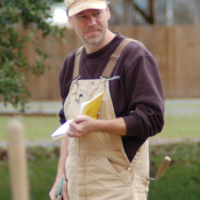






Uploads
Papers by Alemseged Beldados